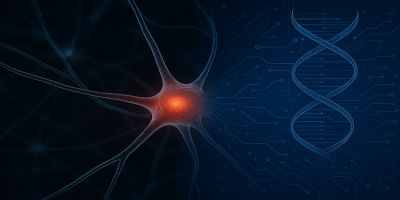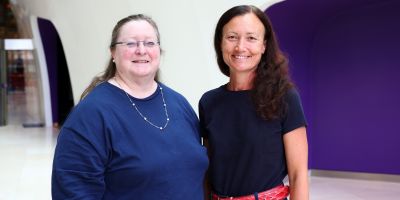Liquid crystal lenses that restore youthful vision

Liquid-crystal technology could soon make reading glasses a thing of the past, thanks to new research into enhanced contact lenses that will be able to switch focus.
Revolutionary liquid-crystal contact lenses that can be controlled is the focus new research led by Professors Helen Gleeson and Cliff Jones, School of Physics and Astronomy, and Professor Phil Morgan (University of Manchester, Optometry).
It features in the February 2018 issue of Physics World, the magazine of the Institute of Physics, one of the largest learned societies in the world.
In the magazine article, Professor Gleeson explained how her team had used the liquid-crystals, which are found inside TVs and smartphones, to improve the ubiquity and functionality of contact lenses to address the problem of depleted vision over time.
Over the course of a person’s life, it becomes more difficult to focus on objects due to the crystalline lens in the human eye becoming more rigid. The lens is no longer able to change shape as readily as it could in youth to accommodate the objects in sight. This condition, known as presbyopia, affects every person who is over the age of 50.
Presbyopia is a problem
While there are several partial solutions for presbyopia, there are none that can restore youthful vision fully. Most commonly, bifocals and varifocals are spectacles that contain multiple focal regions.
Bifocal contact lenses work by having different focal regions in different parts of the lens. This relies on the brain selecting the right part of the contact lens to distinguish between in- and out-of-focus regions. It also relies on the pupil becoming smaller when we read, making it difficult to focus in the dark.
A futuristic solution
Liquid crystals are a huge part of everyday life, making liquid-crystal displays (LCDs) on smartphones, laptops, gadgets, and television screens. And now, Professor Gleeson explains, they could be used in contact lenses to restore vision.
Many variants of liquid crystals exist, as there are several ways of achieving order in a fluid. But their ability to change their properties is important in developing new ways to help people see more clearly. Their responsiveness to external stimuli such as electric and magnetic fields, temperature and pressure are also key features of their usability.
Researchers have been suggesting liquid-crystal lenses since the 1970s. However, making a liquid-crystal contact lens that is both simple to make and comfortable to wear is not easy. It’s also important that the lens can stay powered for at least a day.
Professor Gleeson’s team decided to use polymethylmethacrylate (PMMA) – the material commonly used for contact lenses – and then came up with a solution based on ‘balanced optics’. It involved forming a contact lens with three layers, each being a lens in its own right.
Together, these three lenses are balanced. Their curvature are designed to provide, depending of the need of the individual, one of two things: no vision correction, or distance vision correction.
When a voltage is applied, producing an electric field across the electrodes, the refractive index of the liquid-crystal layer changes (by an amount that depends on the voltage, the lens geometry and the liquid-crystal material). As a result, the focal power of the lens changes too.
Looking into the future
The team’s findings prove liquid-crystal contact lenses yield fascinating advantages. While there are still some challenges to overcome before getting closer to a commercial switchable contact lens, the results point to a positive future.
The first step will be to determine how the lens will be powered. LCDs are low-power devices, which is one reason that they are so successful. Another challenge is to determine how the lens will know when to change the refractive index.
The research team has shown how there are several possible solutions to powering the lens. They have a strong patent in the area of liquid-crystal contact lenses, and the first investment in their company, Dynamic Vision Systems Ltd. will allow them to make an eye-ready wireless lens with the power source on the lens itself – which is a remarkable discovery.
Further information
For more information about Professor Gleeson's research interests, view her staff profile.
Read the article taken from Physics World to learn more about Professor Gleeson and team's research into liquid crystal lenses.
For more details about Physics World, view their website.
Discover more about the Institute of Physics.
Related articles
Physics World - Looking - into the future
University of Leeds - PhD soft matter research showcased by leading journals




